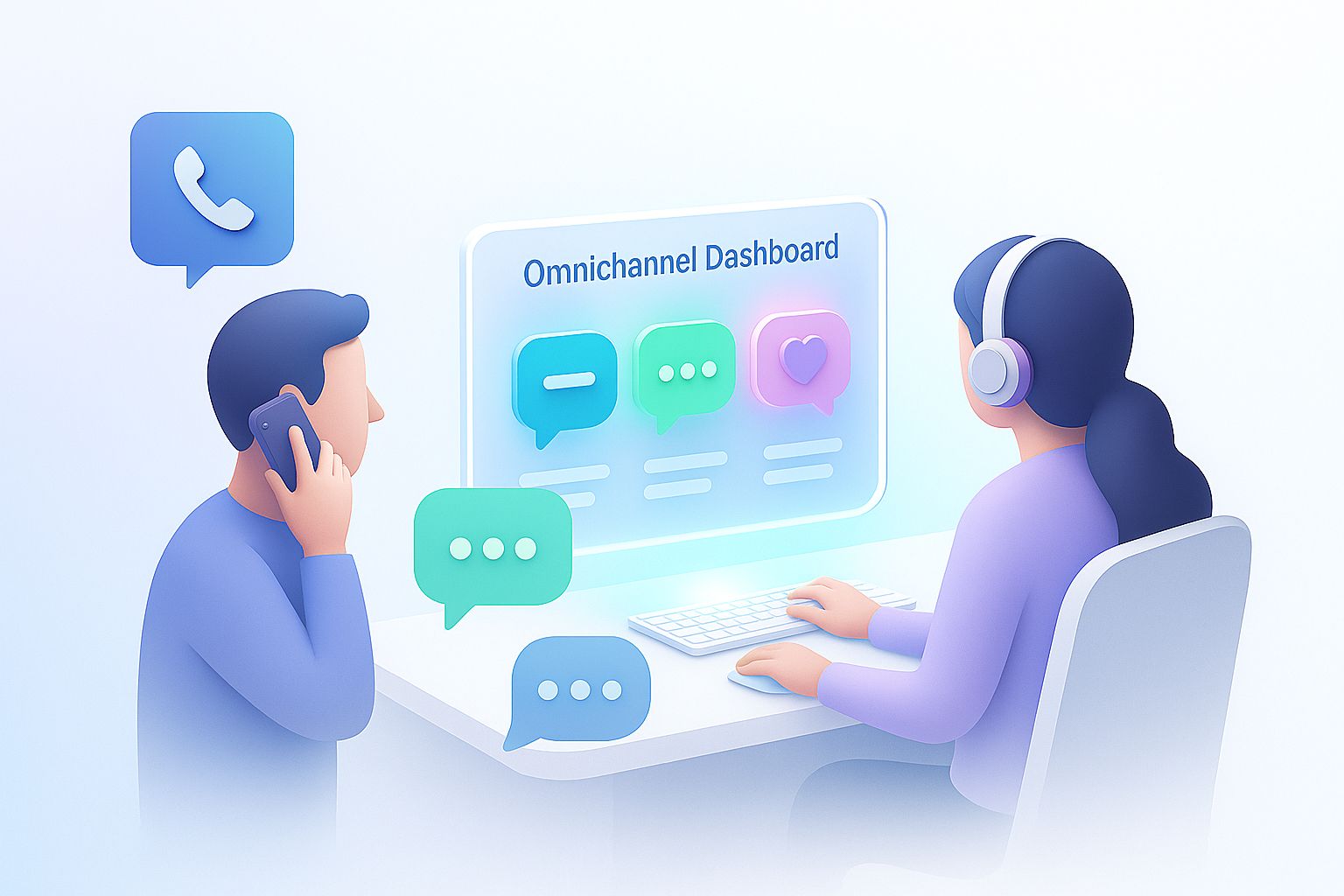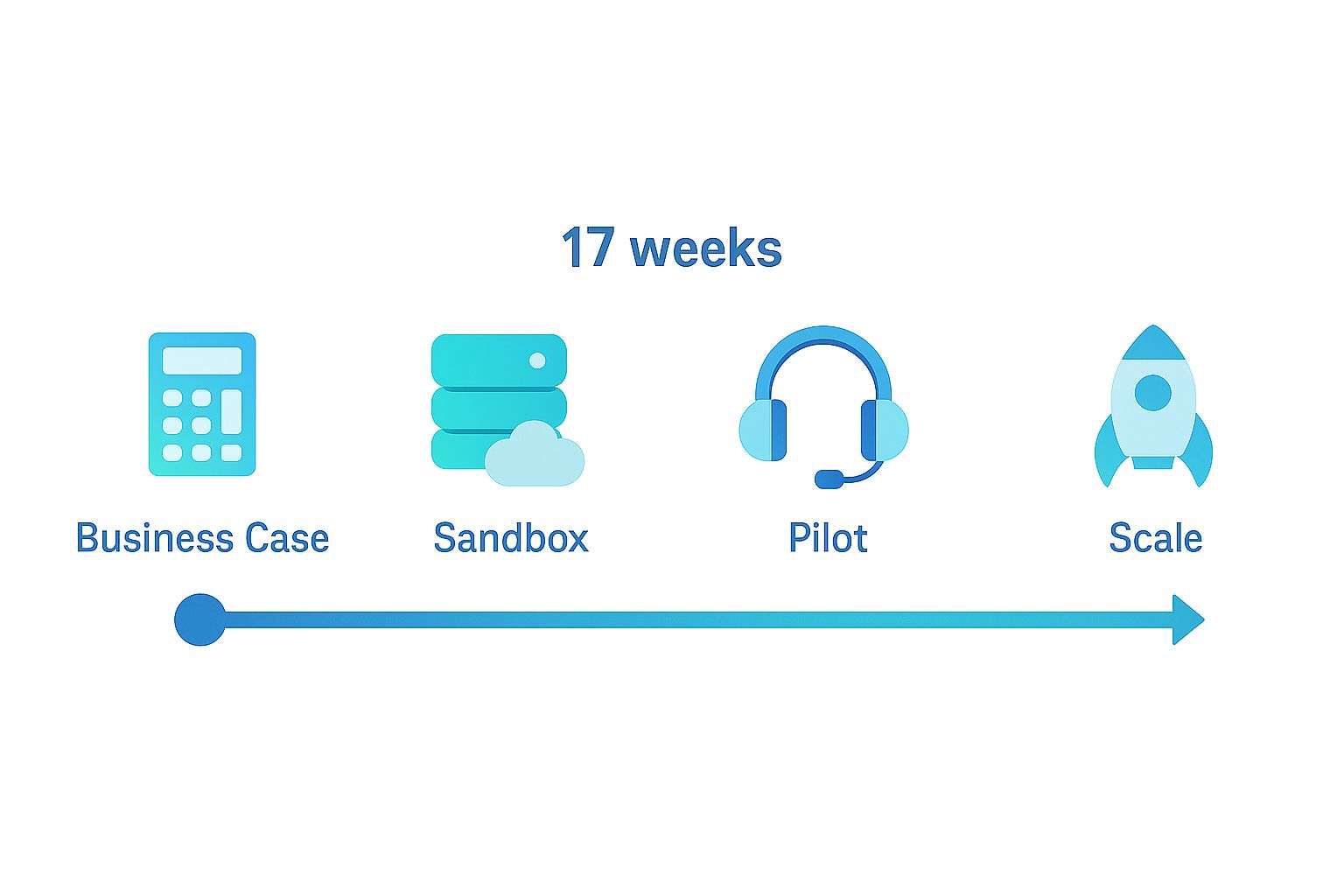Grab a coffee, we’re going to walk through this together.
The 85 % Reality Check
Picture a customer who calls, then hops into chat, then DMs you on X. Eight and a half out of ten of those people expect the experience to feel like one continuous conversation. When it doesn’t, they sigh, start over, or worse bail. Let’s fix that.
“Omnichannel” vs. “We’ve Got Lots of Channels” What’s the Big Deal?
Think of multichannel like a food court: lots of counters, but you queue separately every time. Omnichannel is more like table service you sit once, everything comes to you. Same data, same context, no “Sorry, could you repeat your order?” You trim handle time, boost first contact resolution, and keep customers from rage quitting.

What the Market Looks Like Right Now
Contact center tech isn’t slowing down: analysts peg CX software at roughly 12 % CAGR through 2028, and digital channels already make up 64 % of all inbound volume. Meanwhile, three in five CX leaders have a budget earmarked for real time AI, making cloud native, API friendly platforms the new baseline rather than a luxury.
Where Are You on the Maturity Ladder?
| Stage | Sounds like… | Good fit if… |
|---|---|---|
| Foundational | “We’ve got voice and maybe chat, but reports live in Excel.” | You’re fleeing on prem PBX pain. |
| Integrated | “One agent desktop, dashboards in real time, still routing by skill.” | Digital volume is rising fast. |
| AI First Omni | “Predictive intent, auto summaries, workforce engagement all API driven.” | You’re chasing <20 sec SLAs and global reach. |
A No Drama Scorecard for Comparing Vendors
- Channels offered (voice, chat, SMS, socials, even video)
- Data unification (does CRM info follow the customer?)
- AI & automation (real time suggestions, transcriptions, bots)
- Routing brains (skill, capacity, customer value)
- Reporting (live, cross channel, custom)
- Extensibility (open APIs, app marketplace)
- Security (PCI, GDPR, HIPAA no shortcuts)
- Total cost (licences + usage + integration)
- Time to first win (templates, migration tools)
- Support & roadmap (24 / 7 help, transparent releases)
Give each item a weight, have three teams score separately, and average it. Bias melts away fast.
Your Four Month Game Plan

Weeks 1 – 2: Make the Business Case Kick things off by mapping every call driver, sizing each channel’s true cost, and translating those numbers into CSAT, AHT, and churn targets. When finance sees the rupee value of your silo pain, budgets open fast.
Weeks 3 – 6: Build a Sandbox Spin up a staging instance and wire CRM, ticketing, and voice together so a single customer really is one customer everywhere. Use this safe playground to test routing flows, data sync, and fail fast experiments.
Weeks 7 – 12: Pilot Limit the first release to one busy queue chat plus voice works great and measure baseline versus new KPIs week over week. Keep a running feedback loop with agents; their gripes tell you where to polish before wider launch.
Weeks 13 – 17: Scale & Polish Add the remaining channels, flip on AI cue cards and auto summaries, and recalibrate workforce rules to match your new speed. With the heavy lift done, you’ll refine SLAs, dashboards, and coaching rhythms for steady long term gains.
Show Me the Money: A Quick ROI Snapshot
| Metric | Before | 12 month After | Delta |
|---|---|---|---|
| Avg. handle time | 6 min | 4.5 min | ↓ 25 % |
| First contact resolve | 68 % | 80 % | ↑ 12 pts |
| Customer churn | 18 % | 13 % | ↓ 5 pts |
Drop churn by five points on a 100k customer base, and boom, about ~$200k drops to the bottom line. The licence fee suddenly looks tiny.
Future Proofing: Five Moves for 2025 and Beyond
Treat channels like products. Launch a new WhatsApp line like you’d ship a feature: set goals, track adoption, iterate. Your customers’ habits shift as fast as their apps.
Build an escalation firewall. Bots can gladly deflect FAQs, but a warm hand off to a human must be one click away; no one wants to argue with a menu tree.
Keep your data lake open. Open APIs mean that when Tool X ages out or Channel Y pops up, you swap pieces, not your whole stack.
Invest in coaching loops. Let AI score calls, then sit with agents in short, frequent huddles. Empathy goes up, handle time down, morale through the roof.
Govern AI before someone else does. Nail your policies on synthetic voice, data retention, and bias checks now. Trust is a feature; build it in.
Conclusion
Omnichannel isn’t shiny tech for tech’s sake; it’s the adhesive that keeps customers loyal and agents sane. Use the scorecard, follow the roadmap, and you can trade churn for lifetime value inside one fiscal quarter.
Next Step: Kick the Tires
Curious how an AI powered voice agent fits into this picture? Spin up a free SuperU agent today and hear the difference for yourself, no code, no commitment.
Frequently Asked Questions
1. What is an omnichannel contact center?
A platform that unifies voice, chat, email, SMS and social into a single agent workspace preserving full context and history across every channel.
2. How does Amazon Connect quality data flow into the platform?
Via native connectors or REST APIs, transcript and contact metadata from Connect (using U-Assist) feed directly into QA dashboards.
3. What’s the difference between manual QA and AI auto-scoring?
Manual QA relies on human reviewers to listen/read and score; AI auto-scoring applies ML models to flag behaviors and calculate scores instantly, enabling 100% coverage.
4. What is a typical implementation timeline?
Discovery to pilot: 4–6 weeks. Parallel run and tuning: 4–6 weeks. Full roll-out: 3–4 months in total.
5. How is sensitive customer data protected?
Platforms enforce end-to-end encryption, automated PII redaction, SOC 2 and ISO 27001 compliance, and strict role-based access controls.
Start for Free – Create Your First Voice Agent in Minutes


